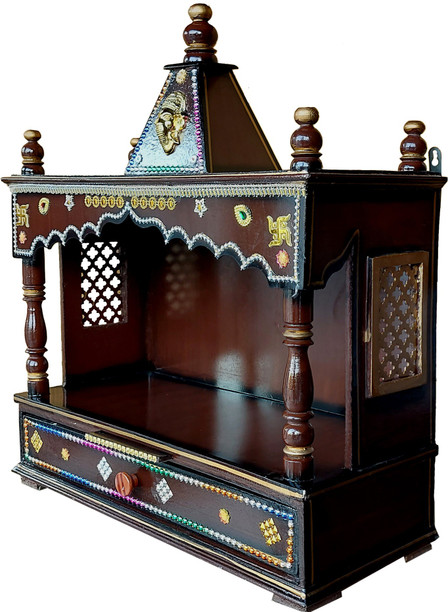


It has a very important place in Tirumala history. Many of the Tirumala visitors know about Hathiramji Matt or Mahant’s matt. The idol of Sri Varahaswami in Tirumala is that of Adi Varaha, as it resembles the description of the Adi Varaha Murti in Vaikhanasa Agama texts. According to Atri Samhita (Samurtarchanadhikara), Varaha Avatara is worshipped in three ways as Adi Varaha, Pralaya Varaha, and Yajna Varaha. Pilgrims should visit Sri Varahaswami temple prior to Sri Venkateshwara temple. According to Brahmapurana, Naivedyam (food offered to God) should first be offered to Sri Varahaswami. Lord Sri Venkateshwara took up residence here, with the permission of Sri Varahaswami. According to legend, Tirumala was originally the Adi Varahakshetra (place belonging to Sri Adi Varahaswami). Thus it is imperative that pilgrims visit Sri Varaha Swami first and The Lord, only later. HE had to take permission from Lord Varaha to stay here and grant HIM (Lord Varaha), the privilege of first view by the visiting pilgrims and first Naivedyam (sacred offering of food to Lord for consecration) in return. The presiding deity is Varaha Swami, an incarnation of Lord Vishnu in the form of a boar that was staying on the hills when The Lord descended unto earth.

The famous temple of Sri Varahaswami in Tirumala is to the north of the Sri Venkateshwara temple, on the banks of Swami Pushkarini. A bath in the holy tank purifies one’s body and soul. Pilgrims bath here before entering the main temple. A bath in the Swami Pushkarini is believed to clean pilgrims of their sins and bestow temporal prosperity. It is adjacent to the Sri Venkateshwara temple. Swami Pushkarini was a pleasure tank of Sri Maha Vishnu in Vaikuntham, and was brought and set on Earth by Garuda, for the sport of Sri Venkateshwara. It has a state-of-the-art recycling facility and water is treated before it gets into and recycled continuously. The water in the Swami Pushkarini is absolutely NOT stagnant OR infected. The water’s chief and famous uses are bathing and washing by the visiting pilgrims who take a dip or swim in it and, above all, for the temple’s special occasions when the divine images are taken in the temple boat, in the tank waters. The waters of the tank were strictly for temple purposes only – like for the God’s “bath” that is a ritual/worship, cleaning and washing the temples insides and outsides, for use inside the temples for drinking purposes (Not in Tirumala, though), kitchens (if any) and by large, by the folk that stay and live by the temple like the priests’ families and workers, for their daily uses. It is very usual and highly probable to find a water tank either just beside or nearby every Hindu temple constructed during the ancient and medieval times.


 0 kommentar(er)
0 kommentar(er)
